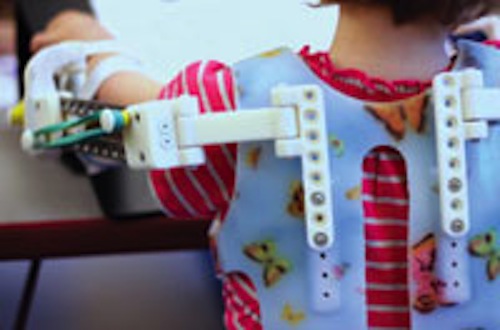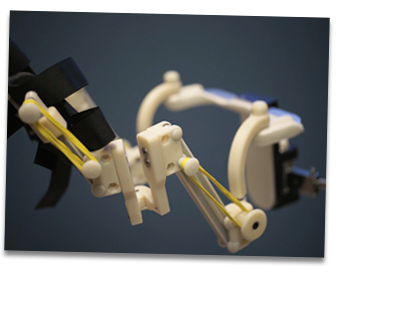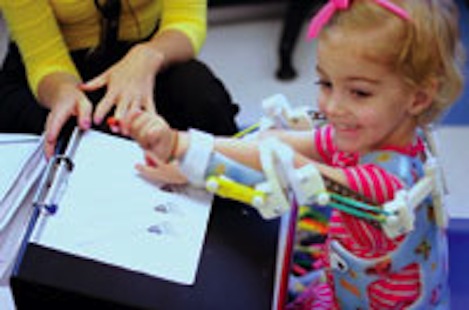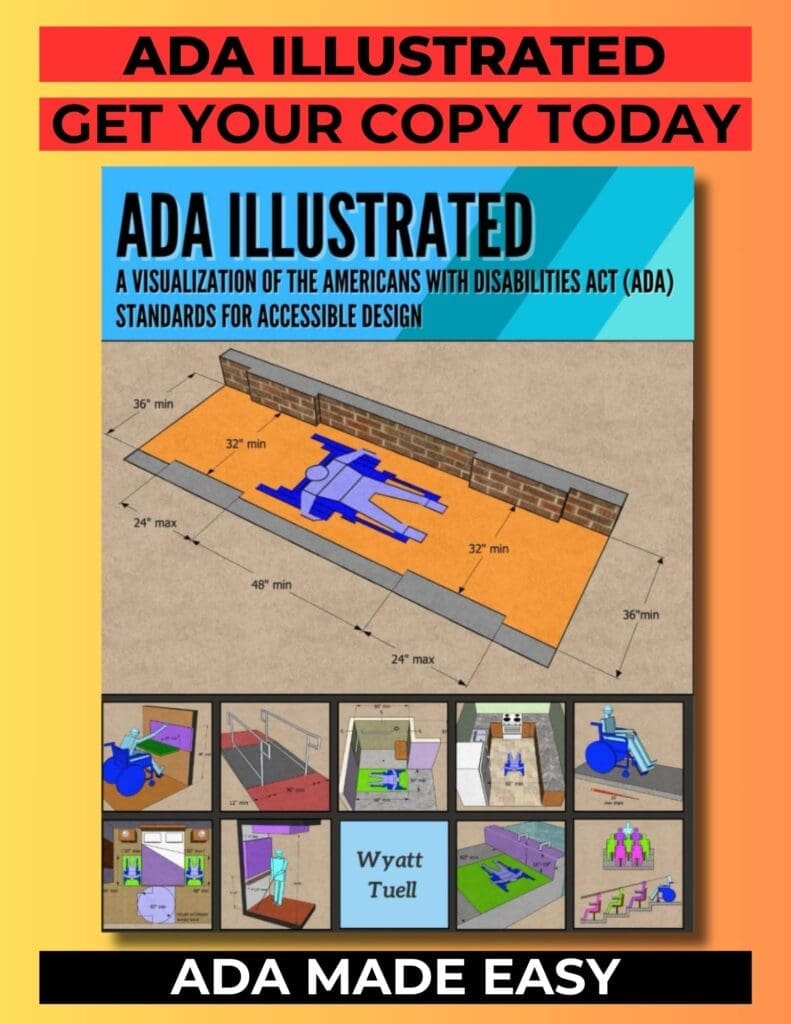WREX Exoskeleton for Children

Some of you may have already come across this story but I still wanted to feature it anyway for those who haven’t. Plus talk about the development of the history and development of the technology. The technology I’m talking about is the Wilmington Robotic Exoskeleton (WREX). A device that helps children with neuromuscular diseases, such as muscular dystrophy, spinal muscular atrophy and arthrogryposis, be able to move their arms in a 3D space.
WREX History
WREX was first developed by Nemours which focuses on children’s health. Their first model was made of metal and mounted to wheelchairs. As can be seen from the video above, children who were not able to move their arms were able to lift their arms with the help of WREX. A metal arm custom fit to the child would attach to their arm. Help in movement is done with elastic bands at the joints.

Along Came Emma
The next stage in WREX development was a smaller, lighter, and portable version. In this stage an adorable girl named Emma, who is diagnosed with arthrogryposis multiplex congenita, helped with development. She did not use a wheelchair and needed a portable version. She also was very small and needed something lightweight. With the help of 3D printing company Stratasys, the next generation of WREX was created.

WREX In Effect
This versions of WREX was worn like a vest. To make the device light enough use, the same plastic used in LEGOs was used to make the parts. Because there are so many small and customized parts, standard manufacturing would have been extremely difficult and expensive. With 3D printing, customized parts can be easily made along with replacement parts.
Conclusion
Currently fifteen other children are using WREX with more to hopefully come soon. Childhood should be full of fun and good memories and anything that can help with that is a fantastic thing. The phrase, “It’s for the kids” is rarely a bad one. For much more on WREX visit the Nemours or Stratasys websites.
